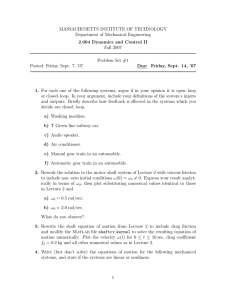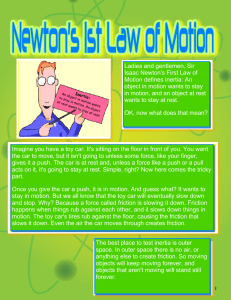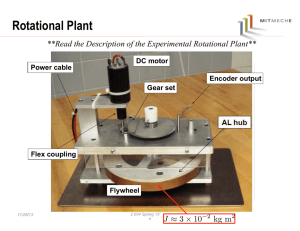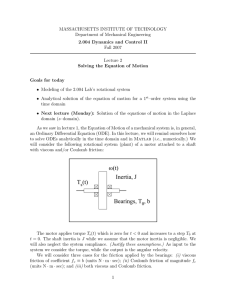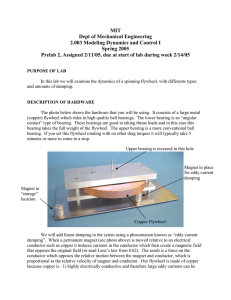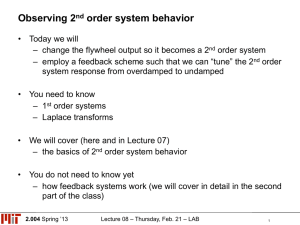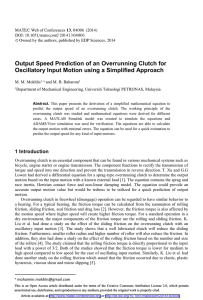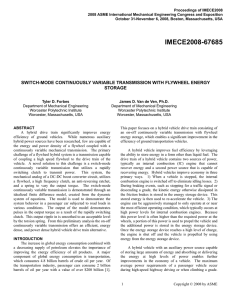MASSACHUSETTS INSTITUTE OF TECHNOLOGY Department of Mechanical Engineering 2.04C Systems and Controls
advertisement
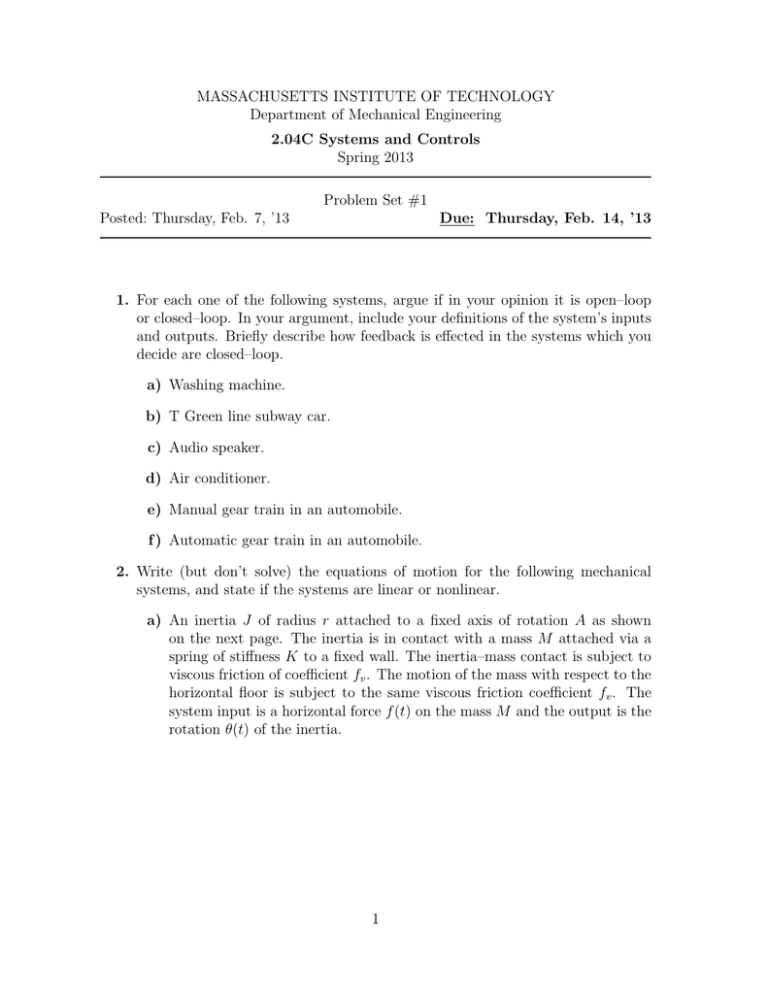
MASSACHUSETTS INSTITUTE OF TECHNOLOGY Department of Mechanical Engineering 2.04C Systems and Controls Spring 2013 Problem Set #1 Posted: Thursday, Feb. 7, ’13 Due: Thursday, Feb. 14, ’13 1. For each one of the following systems, argue if in your opinion it is open–loop or closed–loop. In your argument, include your definitions of the system’s inputs and outputs. Briefly describe how feedback is effected in the systems which you decide are closed–loop. a) Washing machine. b) T Green line subway car. c) Audio speaker. d) Air conditioner. e) Manual gear train in an automobile. f ) Automatic gear train in an automobile. 2. Write (but don’t solve) the equations of motion for the following mechanical systems, and state if the systems are linear or nonlinear. a) An inertia J of radius r attached to a fixed axis of rotation A as shown on the next page. The inertia is in contact with a mass M attached via a spring of stiffness K to a fixed wall. The inertia–mass contact is subject to viscous friction of coefficient fv . The motion of the mass with respect to the horizontal floor is subject to the same viscous friction coefficient fv . The system input is a horizontal force f (t) on the mass M and the output is the rotation θ(t) of the inertia. 1 J fv K r A f(t) M fv b) A pendulum consisting of a mass m attached to a rigid mass–less rod as shown below. The system input is a horizontal external force and the output is the angle θ. external force (input) m gravity 3. Given below are the equations of motion for several systems. f (t) denotes the external force (i.e., input). Which of these systems are linear? Include a brief justification based on the definition of linear systems from Lecture 1. a) 7ẍ + 0.5ẋ + 5 sin 2π t x = f (t). 10 b) 7ẍ + 0.5ẋ + 5(1 + 0.1x)x = f (t). c) 7ẍ + 0.5ẋ + 5x + 5 = f (t). d 1 d) dt mẋ2 + 21 kx2 = 0. 2 4. Consider the basic flywheel rotating in bearings that we use in the Lab, as shown in Fig. 1 of the handout Description of the Experimental Rotational Plant. Assume that the flyywheel, spinning with angular velocity Ω(t), is driven by a 2 time-varying torque source T (t), and that a general friction torque Tf (Ω), is a combination of Coulomb friction due to the contact between the bearings and viscous friction due to eddy–current damping, according to Tf (Ω) = TC + bΩ, where TC and b are constants with the appropriate units. a. Derive the equation of motion for the flywheel under these conditions. b. Consider the case when the applied torque is zero, and the flywheel is “spun down” from at initial angular velocity Ω(0) = Ω0 . Solve the equation of motion. c. Sketch the angular velocity response derived in the previous step, and discuss what happens after a long time t elapses. 5. Given the moment of inertia of the flywheel is J = 3.0 × 10−2 kg · m2 , use the data from your experiment to determine the Coulomb frictional torque and viscous friction coefficient TC and b, respectively. (Hint: slides 17 and 18 from Lecture 3 show you some simple techniques to estimate fixed system parameters from experimental data. In 2.671, you will learn more rigorous ways of measurements and instrumentation.) 3 MIT OpenCourseWare http://ocw.mit.edu 2.04A Systems and Controls Spring 2013 For information about citing these materials or our Terms of Use, visit: http://ocw.mit.edu/terms.
